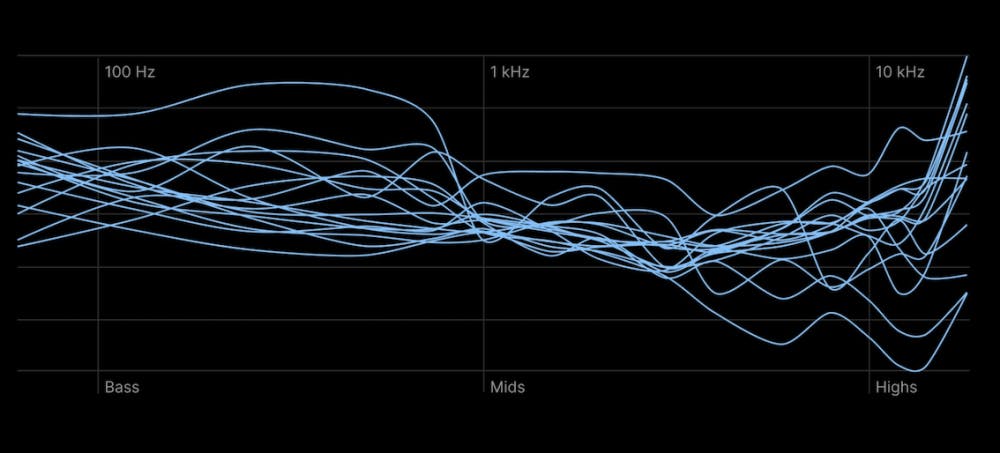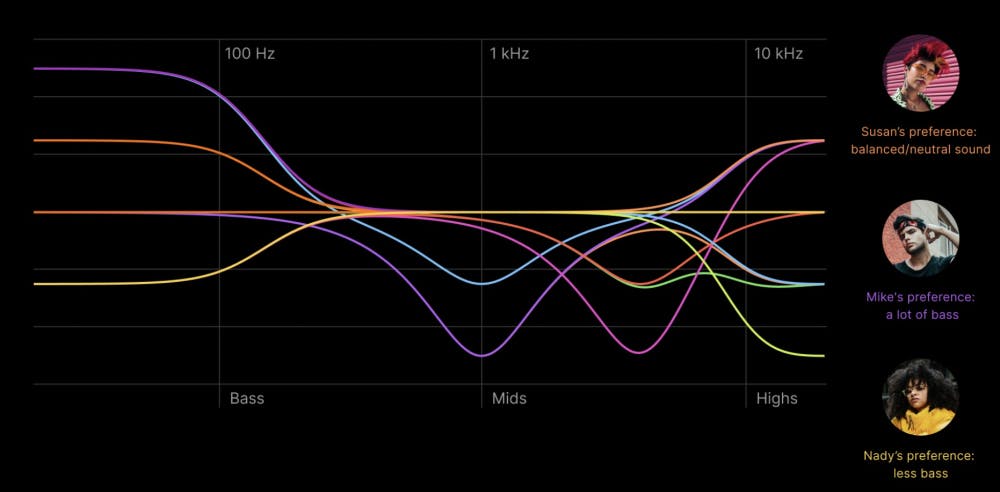Over the past decade, Sonarworks has developed a technology that delivers a reliable reference sound for audio creators – a reference standard that’s now been used across professional recording and bedroom studios worldwide. But eliminating the translation problem for sound creators has been only one part of the equation. Sonarworks’ mission has always been to fix the translation problem at its core – from the studio to the end listener.
Over the last 3 years, we have been studying the subject of end-listener preference a lot. We believe there is no holy grail of sound and the best possible sound for us as individuals is a personal matter. In this article, we wanted to explain our data behind this belief and how it helps you to maximize the listening experience.
The data behind consumer sound preferences
We at Sonarworks conducted the biggest consumer sound preference research globally. We wanted to find out which sound profile people prefer the most. And how does it compare to the option of enjoying a personalized sound experience delivered by our sound personalization technology SoundID.

Within this research, over 150’000 people tested 520 unique sound profiles and 2.4M sound comparisons. Our key finding was that 82% of participants preferred SoundID sound over the original sound of the headphones. The data also showed that, if you take any single unaltered sound of a headphone, it’s going to be the best possible sound for no more than 17% of listeners. To put this in simple terms, you can build the best possible headphones, and still, in the best-case scenario, only 17 out of 100 people will say these headphones deliver the best possible sound for them. Whereas, by adjusting the sound to your preferences this number increases from 17 to 82. That means, there is no one sound that’s optimal for every end listener, everyone has a different taste in sound and everyone’s hearing is a little different. So what an ideal sound means from a listener’s perspective is really a personal matter.
There is no holy grail. Here’s what defines the new normal
A sound profile is a frequency response curve representing your unique sound preferences. To put things simply, every headphone represents 1 single frequency response – an equalizer that’s being added to the sound. We all have been playing with equalizers across different platforms and apps to adjust the sound target towards our preferences. But by doing so we rarely know what exactly has been achieved as the end result and whether it is the ultimate best sound for us.

Examples of different sound profiles people prefer. There’s not a single one-size-fits all sound for everyone.
Unfortunately, we don’t typically have access to a store, like a shoe store, where we can try on and listen to hundreds of brands and models of headphones, so we make choices based on reviews, friend recommendations, interviews with people we respect, and even fashionistas. Consumer real-world experience with different headphone models usually is very limited. The worst part is that no headphone model is free of acoustic artifacts forced by physical limitations, which lead to some frequencies being exaggerated while others are significantly attenuated. Even if you’ve found a headphone model you enjoy the sound signature of, you don’t know what you’re missing and it’s almost certain that it’s not the ultimate sound for you. Also, when the time comes to retire your beloved headphones, your next cans will sound different, since there are only a few manufacturers with somewhat unified sound signatures across their brands. The traditional thought has been that “flat” sound is desirable so that our playback systems faithfully represent the audio that was created by artists and engineers in recording and mastering studios. It turns out that, as consumers, very few prefer a purely neutral response, so headphone companies most often aim for sound signatures with various degrees of bass and treble boosts. Our data shows that there is no one sound to be liked by everyone. It is not that the industry does not know enough about consumer preferences, but rather the fact that consumers do not converge on one target. We find this conclusion very obvious on a personal experience level where most of us are well aware that personal experiences based on human senses are very individual. As an analogy, nobody would try to argue that bananas taste better than strawberries. Hearing sense just as any other sense seems to be an individual experience.

There’s not a single one-size fits all sound for everyone.
Based on the insights from our sound preference research, we developed a product called SoundID. It’s an app that uses smart algorithms to find the ideal personal sound profile for each individual and then lets to connect it to SoundID-enabled devices like headphones or smartphones to enjoy the best personalized sound. Sound personalization is done based on the flat studio reference sound that is used in Sonarworks patented PRO audio tech used in over 100 000 recording studios globally. That is very important as it ensures the best connection between the music creator and the listener.
Experience the SoundID difference in just 90 seconds
SoundID solves a long-standing problem in the audio-tech space. Until now, manufacturers have applied a ‘one size fits all’ approach regardless of the many variables – hardware options, and audio formats, while not taking into account the variable of the end user – all of whom hear differently and have their individual preferences.
Headphone manufacturers strive for the best version of their sonic vision, but design, manufacturing, and cost limitations can affect their overall accuracy and presentation. Therefore with SoundID, your headphones will retain the comfort, style, and even certain audio characteristics that appealed to you from the start. But the overall frequency response, however, is now custom-tailored to your personal preference. You get the best of both worlds—headphones you already like with personalized sonics.
SoundID delivers individually perfected sound talored to each individual. There’s not a single one-size fits all sound for everyone. Through our research we have learned that different people prefer different sound and with help of machine learning running on big research data we help listeners to discover their individual preference in a quick and easy way. In fact, within our research 82% of participants found a better sound profile with SoundID in just 90 seconds.
Have you tried how a personalized profile maximizes your listening experience? If not, we recommend finding out by downloading our free mobile app and try it out. Anyone can try out creating their personal sound profile via SoundID app (available on Google Play and App Store) or enjoy the full playback experience through SoundID enabled headphones that are already in the market.




